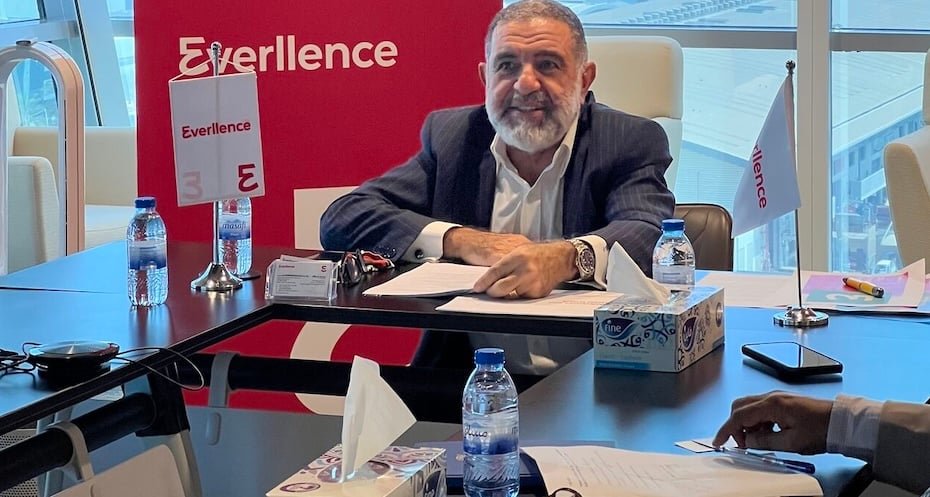
Image: Supplied
As the newly rebranded Everllence (previously MAN Energy Solutions) is strategically positioning its carbon capture technologies to assist nations in the region with their ambitious energy transition journeys.
With its comprehensive carbon capture and hydrogen production know-how, Everllence is set to play a pivotal role in the decarbonisation of hard-to-abate industries like cement and oil and gas, supporting key national sustainability visions such as Saudi Vision 2030 and UAE Net Zero 2050.
In this interview, Gaby Hanna, SVP and MD at Everllence MEA, shares the company’s focus on integrating proven technologies into existing operations to optimise efficiency and drive economic viability. Here are excerpts from the discussion.

As the newly rebranded Everllence, how are you positioning your carbon capture technologies to support the decarbonisation of hard-to-abate sectors in the GCC, such as cement, and oil and gas?
The GCC is a key priority for Everllence because it is traditionally built on “hard-to-abate” industries and is simultaneously undertaking ambitious, world-leading energy transition journeys. Nations like the UAE, Saudi Arabia, and Oman are investing heavily in diversification and sustainable technologies.
The carbon capture technology will play a vital role in significantly reducing emissions from hard-to-abate industries such as cement and oil and gas.
We are already a partner of the GCC industry for more than 50 years and now we will support it on its way to climate-neutrality with our comprehensive carbon capture know-how:
Our compressor technology is already proven in 30 projects worldwide and helped to compress ~200 Mio. t of CO2.
Several regional carbon capture projects are underway in the UAE and Oman. Can you share insights on their progress, scalability, and what makes them globally significant?
We will supply one of the largest CO2 compressors in terms of size and mass flow for the Habshan carbon capture, utilisation and storage (CCUS) project of ADNOC.
The facility will have the capacity to capture and permanently store 1.5 million tons per annum (mtpa) of carbon dioxide (CO2) within geological formations deep underground. This makes it one of the largest integrated carbon capture projects in MENA.
ADNOC is now proving that the CCUS technology is already applicable and scalable and the project will become a blueprint for the MENA region.
How do you address the common criticism that carbon capture is an expensive or transitional solution rather than a long-term fix for emissions reduction?
The so-called hard-to-abate industries such as cement and petrochemicals have no other choice. Their emissions cannot be reduced by direct electrification with green energy as it is applicable for other segments such as car transport.
The cement industry alone is responsible for 12 per cent of worldwide CO2 emissions, which are caused by the production process itself.
CCUS is the solution to capture these emissions before they are entering the atmosphere and even more: The CO2 can then be used as a valuable feedstock to produce climate-neutral fuels to decarbonise industries such as shipping or aviation.
It is already a proven technology which is clearly demonstrated by our 30 projects worldwide. I’m convinced that CCUS will become one of the key building stones of our climate-neutral future.
How is Everllence balancing innovation in carbon capture with economic viability for industrial clients, especially in countries like Iraq, Qatar, and Egypt where infrastructure and priorities vary?
Our tailored solutions are designed to meet the specific needs and national goals of each country.
The key is to integrate our technologies seamlessly into existing operations, optimising efficiency and reducing emissions, thereby supporting decarbonisation without hindering the vital industrial productivity that drives these economies.
With regional goals accelerating around green hydrogen, how does Everllence’s production of electrolysers and partnerships (in Duqm and Egypt) fit into the wider energy transition strategy?
Besides carbon capture, green hydrogen is an essential building block to decarbonise hard-to-abate sectors such as shipping and aviation. Both industries cannot be directly electrified, efor example by using batteries. They require climate-neutral fuels like green methanol or ammonia which are produced from green hydrogen.
The sunny GCC region, of course, offers a huge potential for the production of green energy from solar and therefore also for the production of green hydrogen. If the GCC is leveraging this potential, it can become one of the most important exporters of climate-neutral fuels worldwide.
As a company we are covering the complete value chain of hydrogen – from electrolysers and compressors for pipeline transport to reactor systems for the production of climate-neutral fuels. With our broad hydrogen technology portfolio we will support the GCC in its transformational journey.
What are your immediate priorities post-rebrand in the Middle East and Africa region, and how do you plan to scale Everllence’s impact while staying aligned with national sustainability visions like Saudi Vision 2030 and the UAE Net Zero 2050?
Our 50 plus years of partnership in the region, combined with the significant decarbonisation challenges and opportunities in the region, make it a natural and strategic focus for our solutions. In recent years, we have transferred a lot of capacity to our offices and workshops on-site.
It is important for us, that our local offices are not just mailbox addresses, they are an essential part of our localisation strategy providing extensive engineering know-how to the region. We will also follow this successful approach in the future and see a huge business potential in the MEA region.

